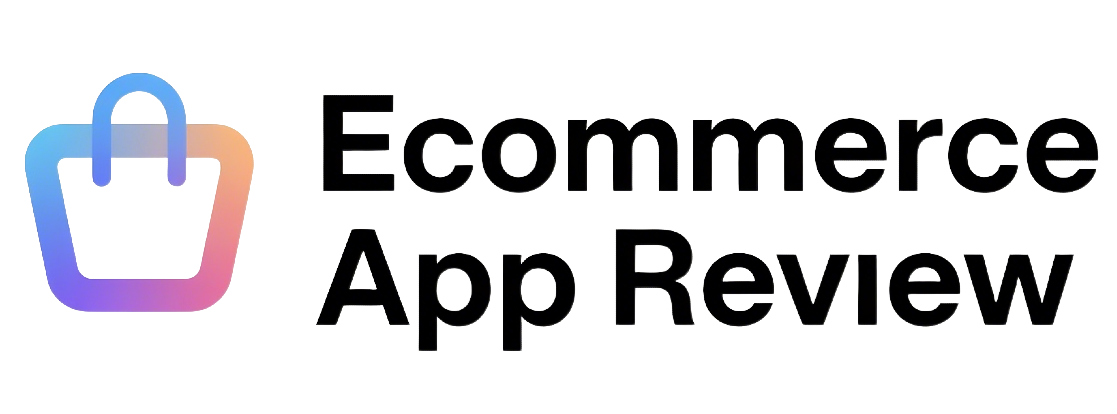Okay, so. Jessica. Let me tell you about Jessica because her story is basically every entrepreneur I’ve ever worked with. Smart woman. Runs a jewelry business. Did all her homework, read every blog post, watched YouTube until her eyes bled. Had it all figured out. But got completely mangled by ecommerce platform hidden costs that she had no visibility to up front.
Fifty bucks a month. That was her original budget. Shopify Basic at thirty-nine, maybe eight bucks for email. Simple, right?
*takes a sip of coffee* ☕️
Twelve months later she’s hemorrhaging three hundred and forty-seven dollars. Every. Single. Month.
Thing is, Jessica isn’t some massive operation here. She’s not Amazon. She’s making jewelry in her spare bedroom in Portland. But somehow her “budget-friendly” platform turned into this… money-eating monster that’s devouring fifteen percent of her revenue.
And here’s the kicker. She’s not alone. Not even close.
After eighteen years of this – and I mean eighteen years of watching smart people get absolutely destroyed by costs they never saw coming – I’m done. Done staying quiet about this garbage. Platform pricing pages? Complete fiction. Not lies exactly, but… okay, they’re lies. Pretty lies wrapped in marketing speak.
Look, me and my clients have been through this dance three hundred times. Maybe more. I’ve lost count honestly. But what I haven’t lost track of? The shocked faces when that first real invoice shows up.
*☕️ getting cold, need a refill*
Where was I? Right. The lies.
That twenty-nine dollar Shopify plan everyone talks about? Pure fantasy. The “free” WooCommerce setup? Yeah, and my garage is free office space if you ignore the mortgage. These vendors know exactly what they’re doing. Show you the appetizer price, hope you don’t notice when the full meal costs five times more.
Thing is, the real cost – and I mean the actual, no-bullshit cost of running a professional online store – runs about three to five times whatever the marketing page says. Sometimes more if you’re unlucky.
The Five Ways They “Get” You (That Nobody Talks About)
fresh ☕️ acquired
Alright, so here’s how this works. There are five expense buckets that every single vendor “forgets” to mention. And I use air quotes there because forgetting implies it’s an accident.
App Subscriptions (aka Death by a Thousand Cuts)
First way they get you. Apps. So many apps.
That basic Shopify plan? Intentionally broken. Can’t recover abandoned carts. Can’t send decent emails. Can’t track inventory properly. Can’t do… well, anything useful really. It’s like selling you a car without wheels and charging extra for each tire.
Email marketing? Twenty-nine to seventy-five bucks monthly for Klaviyo – and trust me, there’s a reason everyone swears by this platform. Product reviews so customers don’t think you’re running a scam? Fifteen to thirty for Judge.me. Analytics that actually tell you something useful instead of pretty colors? Another thirty-five for Better Reports.
David – client of mine here in Austin, runs outdoor gear – started with Shopify Basic thinking he was being smart about money. Six months later, me and David sat down with his credit card statements. Eight apps. Eight! Totaling one hundred and twenty-seven dollars monthly.
Thing is, David wasn’t being wasteful or anything. These weren’t luxury features. Email marketing, reviews, inventory alerts, cart recovery, basic analytics. Stuff you absolutely need to compete online. But somehow Shopify’s marketing forgot to mention their thirty-nine dollar plan doesn’t include the tools to actually run a business.
It’s genius really. Evil genius, but genius. Each cost seems reasonable individually. Twenty here, thirty there. Before you know it you’re spending more on apps than most people spend on groceries.
Processing Fees (The Silent Killer)
*realizes coffee cup is empty again 🫤*
Second way. Transaction fees. Every sale costs you money. Every. Single. Sale.
Shopify hits you for 2.9% plus thirty cents per transaction. Sounds reasonable until you actually do the math. At ten thousand monthly revenue – which isn’t huge for most businesses – that’s three hundred and twenty bucks just in processing fees. Monthly.
According to Baymard Institute’s research, the average cart abandonment rate is 69.99%. So you’re paying processing fees on every successful transaction while losing money on abandoned carts that free platforms would help you recover.
But wait! There’s more! Want to use a different payment processor? Maybe one with better rates? Shopify charges you an extra two percent penalty. Because apparently choice is expensive.
Thing is, these fees scale with success. The better you do, the more they take. Me and my wife calculated this for her Etsy shop the other day. If she moved to Shopify and hit her goal of five grand monthly, processing fees alone would cost seventeen hundred and forty dollars yearly. That’s real money for a small business.
And international sales? Forget about it. Currency conversion fees, international processing fees, VAT complications. Each adding another percentage point. By the time you’re selling globally, payment processors are taking a bigger cut than most business partners.

Development Costs (Where Dreams Go to Die)
Third bucket. Making your store not look like garbage.
Free themes look free. Generic, boring, obviously templated. Want your business to look legitimate? Premium theme. Two to four hundred bucks upfront. Not terrible honestly.
But then – and this always happens – the theme doesn’t quite match your brand. Colors are wrong, layout needs tweaking, functionality is missing. Welcome to developer hell. Seventy-five to two hundred per hour, everything takes twice as long as quoted.
That “simple” color change? Eight hours because the theme code is a mess. Custom functionality? Suddenly you’re looking at a two-thousand-dollar project. Thing is, developers aren’t trying to rip you off. This stuff just takes time.
Watched a client in Denver spend six grand “customizing” a three-hundred-dollar theme. By the end they basically had a custom theme that cost twenty times more than buying premium. But they got there one small change at a time, so it never felt like a huge expense until… well, until me and them added it all up.
*getting up for more ☕️, this is depressing*
Then there’s maintenance. Themes break. Apps stop working together. Something always needs fixing. Budget another two to five hundred monthly unless you enjoy troubleshooting CSS at midnight. Which I don’t recommend. Trust me on this one.
Third-Party Services (The Stuff Nobody Mentions)
Your platform handles the store part. Doesn’t handle everything else though.
Professional email hosting so your messages don’t end up in spam folders. Domain registration, SSL certificates. Backup services because platforms crash and data disappears. Security monitoring because hackers love small businesses with weak passwords.
Each service runs fifteen to fifty monthly. Individually reasonable. Collectively expensive. Thing is, these aren’t optional extras. Requirements for running a professional business online. But platform pricing calculators somehow never include them.
CDN services for global speed. Analytics beyond the basic garbage platforms provide. Customer service tools that actually work. Project management software to track everything. Before you know it, you’re running a small tech company just to sell products online.
Time Costs (The One Everyone Ignores)
*back with coffee, where was I?*
Right. Time. Your time.
Platforms love marketing themselves as “easy” and “quick setup.” Complete horseshit. Learning any platform well enough to run a real business takes twenty to forty hours minimum. And that’s assuming everything goes smoothly. Which it never does.
Ongoing management? Product updates, inventory, orders, customer service, marketing setup. Figure five to fifteen hours monthly just keeping things running. What’s your time worth? Because that’s a real cost even if you’re not writing checks.
Thing is, most small business owners don’t factor time into platform costs. They see “free” or “low monthly fee” and think they’re saving money. But if you’re spending twenty hours monthly managing a complex platform when a simpler one takes five hours, what are you really saving?
Platform Reality Check (aka What Things Actually Cost)
*☕️ break over, let’s get into the ugly numbers*
Alright. Let me break down what each major platform actually costs when you strip away the marketing fiction.
Shopify: The Thirty-Nine Dollar Trap
Shopify Basic is bait. Pure and simple. Hook you with the low price, then charge for every feature you actually need.
Can’t create gift cards on Basic. Reporting is hot garbage. Shipping calculations are primitive. No professional reports for taxes. Most businesses upgrade to regular Shopify at one-oh-five monthly within six months just to get basic functionality.
But even regular Shopify isn’t enough. Need apps. Lots of apps. Email marketing twenty-nine to seventy-five monthly. Reviews fifteen to thirty. Analytics thirty-five to one hundred. Inventory management twenty-five to one-fifty. Cart recovery twenty to fifty.
Maria – remember the soap lady? Started at thirty-nine, ended up at one-eighty-seven monthly. Not because she was careless. Because she needed basic business tools.
Her breakdown: Shopify thirty-nine, Klaviyo email forty-eight, Judge.me reviews fifteen, Better Reports thirty-five, Bold inventory twenty-five, ReConvert upsells twenty-five. Plus transaction fees eating 2.9% of every sale.
Thing is, Maria’s typical. Most Shopify stores hit one-fifty to three hundred monthly once you factor in necessary apps and fees. That thirty-nine marketing price? Fantasy land.
Speaking of apps, AI-powered Shopify apps are becoming essential – and they’re adding even more to your monthly costs.
Hidden gotchas nobody mentions: Two percent penalty for using external payment processors. Apps that break when Shopify updates. Vendor lock-in because switching means rebuilding your entire app ecosystem.
Don’t get me wrong, Shopify’s solid. Great platform. Also expensive as hell once you add everything you need.
WooCommerce: The “Free” Platform That Costs More
getting worked up here, need to breathe 🧘
WooCommerce fans… look, I like WooCommerce. Really. But calling it “free” makes me want to throw my laptop.
WooCommerce being “free” is like saying a car engine is free if you ignore the car, gas, insurance, and maintenance. Sure, the plugin costs nothing. Everything else though…
Hosting that won’t crash when you get traffic: eighty to two hundred monthly for managed WordPress hosting. Cheap shared hosting will die the moment you get real visitors. Trust me, me and my clients learned this expensively.
Essential plugins: WooCommerce Subscriptions one-ninety-nine yearly, Advanced Custom Fields Pro one hundred yearly, Yoast SEO Premium eighty-nine yearly, security monitoring one to three hundred yearly, backups fifty to two hundred yearly. Add it up, you’re looking at five to eight hundred annually just for plugins.
Then the big one: developer time. WooCommerce needs ongoing technical maintenance. Security updates, plugin compatibility, performance optimization, backup management. Either learn this yourself – goodbye weekends – or pay someone two to five hundred monthly.
Tom runs auto parts using WooCommerce. Thought he was being smart avoiding monthly platform fees. Reality: hosting one-forty-five monthly, plugins four hundred yearly, developer maintenance six hours monthly at one hundred hourly. Monthly cost: one-seventy-eight plus his time learning WordPress.
Thing is, WooCommerce makes sense for high-volume businesses with technical resources. No transaction fees means big savings at scale. But “free”? Marketing nonsense that costs small businesses real money.
*☕️ getting cold again, brb*
BigCommerce: The Forced Upgrade Surprise
BigCommerce markets “no transaction fees.” True. There’s always a catch though.
Forced upgrades. Hit fifty thousand in sales on Standard? Congratulations, you’re required to upgrade to Plus at one-oh-five monthly. Hit one-eighty thousand? Upgrade to Pro at three-ninety-nine. Whether you need extra features or not.
Jennifer runs fashion, hit the fifty thousand limit in October during holiday season. Forced upgrade when cash flow was tightest. Fun times.
BigCommerce also has fewer apps. Less competition means higher prices. That cart recovery app costing fifteen on Shopify? Forty on BigCommerce because options are limited.
But here’s where BigCommerce works: serious volume with fee sensitivity. At three hundred thousand annual revenue, Shopify’s transaction fees cost about eighty-seven hundred yearly. BigCommerce’s higher monthly fee starts looking reasonable.
Square: The Multi-Channel Story
Square markets unified online/offline sales. For true multi-channel businesses, pretty compelling.
But “free” online plan is limited. Remove branding? Eighteen monthly. Advanced features? Twenty-nine to seventy-nine monthly. POS hardware? Two to five hundred upfront.
Rachel runs three boutiques plus online. Inventory sync between locations and website was game-changing. One sale updates inventory everywhere automatically.
Trade-off though. Square’s ecommerce features feel basic compared to Shopify. Fewer apps, less customization, primitive SEO tools. You’re trading advanced functionality for multi-channel simplicity.
realizes I’ve been rambling, where was I going with this?
Oh right. Costs. Square works for multi-channel retail but feels limited for online-first businesses.
The Calculator That Prevents Disasters
Look, I built this calculator because watching businesses get blindsided by costs got old. Fast.
Hidden Costs Calculator – Real Budget in 2 Minutes
Hidden Costs Calculator
Get your realistic ecommerce platform budget in 30 seconds
Based on 300+ real implementations, not marketing promises
Your Cost Breakdown
Based on your business size and technical comfort, Shopify offers the best balance of features and ease of use for your situation.
Based on three hundred implementations over eighteen years. Not marketing promises. Real data from real businesses spending real money.
Input your business info – revenue projections, product count, team size. Select required features – email, reviews, analytics. Indicate technical comfort – DIY versus professional setup. Calculator matches you with appropriate platforms and shows realistic monthly costs.
Output isn’t just a number. Complete breakdown showing platform costs, app subscriptions, processing fees, development estimates, total ownership over two years. Plus optimization recommendations for your specific situation.
Thing is, most businesses budget based on marketing pages, then get shocked by reality. Calculator prevents shock by showing realistic costs upfront.
Takes two minutes. Potentially saves thousands in surprises.
Cost Optimization (aka How Not to Go Broke)
After watching hundreds of businesses manage platform costs, here’s what actually works.
Start Lean, Scale Smart
Phase One – months one through six: Launch with minimum functionality. Basic email, simple analytics, essential payments. Resist installing every app that looks shiny.
Thing is, you don’t know what you need until customers start buying. Most assumptions about required features turn out wrong.
Phase Two – months six through twelve: Add features based on data, not assumptions. If cart recovery improves revenue, invest in premium app. If basic analytics don’t answer questions, upgrade reporting.
Phase Three – year two and beyond: Optimize for growth and efficiency. Custom development for competitive advantages. Advanced integrations for workflow automation.
Key is resisting feature creep. Every app, every upgrade, every customization should solve a real problem you’re experiencing. Not problems you might have someday.
Platform-Specific Tips
Shopify: Use Shopify Payments to avoid two percent penalty. Pay annually for apps when possible – usually ten percent discount. Bundle similar functionality instead of installing five apps that do the same thing.
Most Shopify stores install way too many apps. Seen stores with twenty-plus apps when five would work better. Each additional app increases complexity and costs.
WooCommerce: Invest in quality hosting. Cheap hosting costs more in downtime and security issues than you save monthly. Keep plugins minimal. Performance monitoring essential because slow WooCommerce converts terribly.
BigCommerce: Time upgrades carefully. Approaching sales limit? Consider upgrading before hitting it to avoid forced mid-cycle changes. Use built-in features before installing apps.

The Fifty-Thirty-Twenty Rule
How me and successful clients allocate platform budgets:
- Fifty percent for platform and essentials – hosting, basic apps, payments
- Thirty percent for growth and optimization – premium apps, advanced features, marketing
- Twenty percent contingency for unexpected costs and opportunities
Prevents both under-budgeting – which kills businesses – and over-spending – which kills profitability.
Contingency fund is crucial. Platforms change, apps break, opportunities emerge. Twenty percent buffer prevents panic decisions when unexpected costs hit.
When Cheap Gets Expensive
getting frustrated again thinking about this 😤
Watched too many businesses try saving money upfront only to spend ten times more fixing problems later.
Platform switching costs are brutal. Migration typically runs three to fifteen thousand depending on complexity. Lost sales during transition – minimum one to three weeks. SEO impact from URL changes. Customer confusion from different checkout.
These costs are mostly avoidable if you choose right initially. But businesses see “twenty-nine monthly” and think they’re being responsible, not realizing they’re setting up expensive problems.
Security is another area where cheap gets expensive fast. According to IBM’s Cost of a Data Breach Report, the average cost of a data breach for small businesses is $2.98 million globally. Plus reputation damage taking years to recover. Plus customer trust that might never return.
Performance costs compound. One second extra load time reduces conversions seven percent. Poor mobile experience loses sixty-five percent of traffic. According to Google’s research, 53% of mobile users abandon sites that take longer than 3 seconds to load. Cheap hosting saving fifty monthly can cost thousands in lost sales.
Had a client try saving money with basic shared hosting. Site crashed during every traffic spike. Three months of lost sales and angry customers cost way more than proper hosting. Sometimes expensive is actually cheaper.
Investment Thinking
Thing is, successful businesses think platforms as investments, not expenses. Question isn’t “what’s cheapest?” It’s “what’s best ROI?”
Platform features should enable revenue growth. Email marketing increasing repeat purchases. Analytics identifying profitable products. Inventory management preventing stockouts. Performance optimization improving conversions.
Calculate feature ROI before installing anything. Fifty-dollar monthly app increasing revenue five hundred monthly? Good investment. Two-hundred monthly platform preventing one five-thousand migration? Pays for itself in two years.
*almost out of ☕️, this is getting long*
Stop Getting Surprised (Your Action Plan)
After eighteen years helping businesses navigate platform costs, here’s what you need to do. Right now.
Take the calculator seriously. Based on real implementations, not marketing promises. Input actual business requirements, not wishful thinking. Budget for realistic costs, not marketing page fiction.
Think total ownership, not monthly fees. Include apps, transaction fees, development, your time. Cheapest platform often most expensive when you factor everything required.
Start lean but budget for growth. Launch with essentials, but don’t choose platforms you’ll outgrow in six months. Switching platforms always costs more than staying put.
Thing is, best platform isn’t cheapest. It’s the one where you understand exactly what you’re paying for and why.
Look, me and you both know choosing wrong costs way more than choosing right. Calculator tells you what I’d tell you in a two-fifty hourly consultation, except it’s free and takes two minutes instead of two hours.
Stop researching and start budgeting. You’ll thank me when you’re not scrambling for extra money six months after launch because nobody warned you about real costs.
Need to figure out which platform fits your business? Take our comprehensive platform assessment for personalized recommendations based on your situation, not feature lists.
Actually, let me end with this. Because it’s important.
Platform costs aren’t the enemy. Surprise costs are the enemy. Budget properly, choose appropriately, launch confidently. Your business deserves better than getting blindsided by expenses you should have seen coming.
Okay, definitely need more coffee now.


3 thoughts on “How To Spot The Ecommerce Platform “Hidden Costs” That Will Kill Your Profitabilty”